
Condavs.pip: Which one is more suitable for Python package management?
Introduction:
For Python developers, it is very important to choose the appropriate package management tool. Currently, the more popular package management tools include Conda and pip. Both can manage Python packages efficiently, but differ in some aspects. This article will compare Conda and pip in terms of installation, dependency management, environment management and community support, and give some specific code examples.
1. Installation:
Conda is the default package management tool in the Anaconda distribution. It is a cross-platform, open source package management system that can install and manage Python and its related packages and dependencies. Pip is Python's default package management tool, which can install and manage Python packages from the Python Package Index (PyPI).
To compare the installation process, we first use Conda to install a package named numpy, the command is as follows:
conda install numpy
Then use pip to also install numpy:
pip install numpy
You can find, The installation process using Conda is automated, it automatically resolves dependencies and downloads the required packages for installation. Pip, on the other hand, requires manual management of dependencies and manual resolution of dependencies when needed.
2. Dependency management:
Conda is very powerful for dependency management. It can manage dependencies between packages and automatically install the latest version or packages that meet specific version requirements as needed. Next, we use Conda to install a package named pandas. The command is as follows:
conda install pandas
Conda will automatically download and install pandas and all its dependent packages, without worrying about version compatibility and other issues.
Compared with this, pip's dependency management function is relatively simple. The command we use to install pandas using pip is as follows:
pip install pandas
pip will only install the pandas package itself and will not resolve dependencies. Dependencies need to be managed and resolved manually.
3. Environment management:
Conda can not only manage packages, but also manage the Python environment. By creating and activating virtual environments, you can use different Python environments and package versions in different projects. Next we create a virtual environment named "myenv" with the following command:
conda create --name myenv conda activate myenv
Then we can install the required packages in the "myenv" environment without affecting the system environment.
Pip also supports virtual environments, but you need to install virtualenv additionally and then use it to create and manage virtual environments.
4. Community support:
Conda is a package management tool provided by the Anaconda distribution. It has huge user and community support and provides a large number of packaged scientific computing tools and libraries. Conda is a very good choice for developers doing tasks such as scientific computing or data analysis.
pip is Python’s officially recommended package management tool, with a larger user base and wider software package support.
Conclusion:
Conda and pip are both very good Python package management tools, with their own characteristics and advantages. If you need to manage dependencies, create virtual environments, and perform tasks such as scientific computing or data analysis, then Conda is a more suitable choice. And if you just need to simply install and manage Python packages, then pip is a more lightweight and simple tool.
Although Conda and pip are different, the two are not mutually exclusive and they can also be used together. It is very important to flexibly choose and use the tools that suit you based on specific needs and scenarios.
References:
- https://docs.conda.io/
- https://pip.pypa.io/
The above is the detailed content of Condavs.pip: Which is better for Python package management?. For more information, please follow other related articles on the PHP Chinese website!
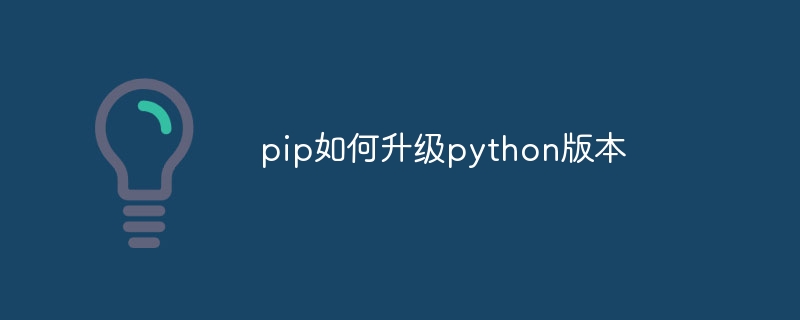 pip如何升级python版本Nov 28, 2023 pm 04:03 PM
pip如何升级python版本Nov 28, 2023 pm 04:03 PMpip升级python版本步骤:1、下载新版本的Python,选择适合你操作系统的安装程序;2、运行安装程序,按照提示进行安装;3、检查Python版本,输入“python --version”命令检查是否是最新版本的Python;4、更新pip,在升级Python的过程中,pip通常也会被更新到最新版本。
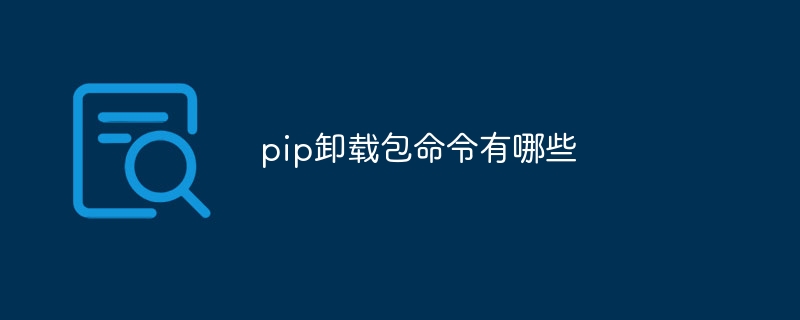 pip卸载包命令是什么Nov 27, 2023 pm 03:45 PM
pip卸载包命令是什么Nov 27, 2023 pm 03:45 PMpip卸载包的命令是“pip uninstall”,其基本用法是“pip uninstall package_name”,其中,`package_name`是要卸载的包的名称。除了基本的卸载命令外,pip还提供了一些可选的参数和选项,以满足不同的需求。
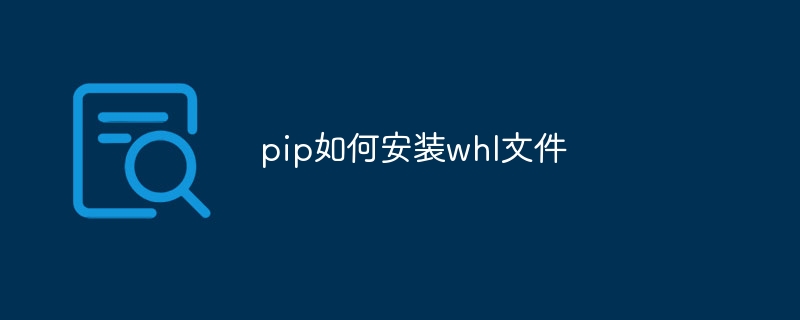 pip如何安装whl文件Dec 05, 2023 pm 03:03 PM
pip如何安装whl文件Dec 05, 2023 pm 03:03 PMpip安装whl文件步骤:1、找到与你的Python版本和操作系统相对应的whl文件;2、将下载的whl文件移动到Python的Scripts目录下;3、打开命令行界面,以管理员身份运行cmd;4、在命令行中输入“pip install 文件名.whl”命令来安装whl文件;5、等待安装完成,如果成功安装,可以在Python文件中导入相应的库来验证是否安装成功。
 如何更新pip版本Nov 27, 2023 pm 05:43 PM
如何更新pip版本Nov 27, 2023 pm 05:43 PM更新pip版本方法有使用pip自身更新、使用操作系统自带的包管理工具、使用Python包管理工具、手动安装最新版本。详细介绍:1、使用pip自身更新:打开终端或命令提示符(Windows用户),执行以下命令来检查当前pip版本:pip --version。如果输出版本号,则可以继续下一步;否则需要安装pip,执行pip install --upgrade命令下载安装最新版即可。
 卸载pip的方法有哪些Nov 24, 2023 pm 02:03 PM
卸载pip的方法有哪些Nov 24, 2023 pm 02:03 PM卸载pip的方法有:1、在命令行中输入“pip uninstall”命令,按回车键执行;2、在命令行中输入“python -m pip uninstall”命令,按回车键执行;3、直接在Python的Scripts目录下删除“pip.exe”和“pip3.exe”这两个文件;4、通过以管理员身份运行命令行或者使用sudo命令来获取管理员权限,然后执行上述的卸载命令。
 pip如何安装指定版本Dec 07, 2023 pm 02:01 PM
pip如何安装指定版本Dec 07, 2023 pm 02:01 PMpip安装指定版本步骤:1、确定想要安装的Python包的确切版本号,在PyPI网站上查找特定包的版本信息;2、在终端或命令提示符中,使用“pip install example_package==1.2.3”命令安装特定版本的Python包即可。
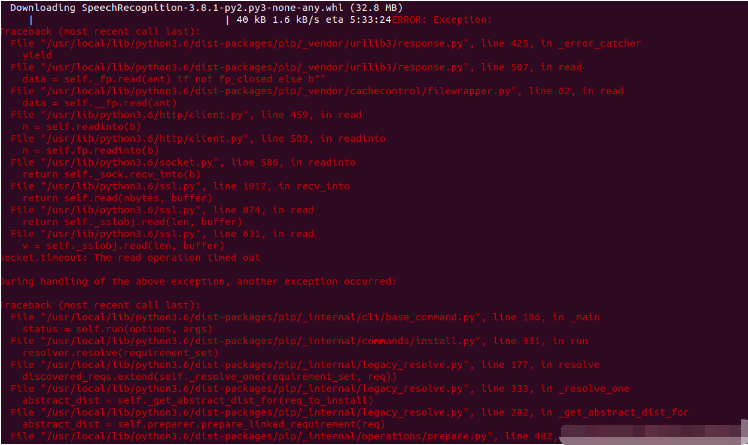 Linux下使用pip安装SpeechRecognition连接超时如何解决May 24, 2023 pm 04:19 PM
Linux下使用pip安装SpeechRecognition连接超时如何解决May 24, 2023 pm 04:19 PMLinux下使用pip安装SpeechRecognition经常会看到代码importspeechrecognitionassr这类的语句,查阅相关资料需要利用pip来安装SpeecchRecognition。首先在Linux下安装pip,然后通过命令pipinstallSpeechRecognition进行安装。总是会出现一大段红字(大致意思连接第三方库网络超时),红字内容大致如下:网上查了好多资料,有的说是改变一下字母大小写然后在还原以前的就可以,测试了一下无效!!!找了好久最终找到了解决办
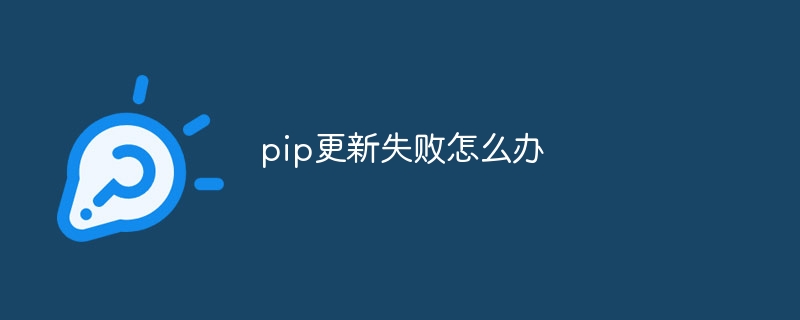 pip更新失败怎么办Nov 23, 2023 pm 05:10 PM
pip更新失败怎么办Nov 23, 2023 pm 05:10 PMpip更新失败解决方法:1、检查网络连接,确保你的网络连接正常,并且能够访问Python软件包索引;2、升级pip版本,在命令行中运行“pip install --upgrade pip”命令;3、清理缓存,运行“pip cache purge”命令清理pip的缓存;4、升级setuptools和wheel;5、使用虚拟环境;6、查看错误日志等等。


Hot AI Tools

Undresser.AI Undress
AI-powered app for creating realistic nude photos

AI Clothes Remover
Online AI tool for removing clothes from photos.

Undress AI Tool
Undress images for free

Clothoff.io
AI clothes remover

AI Hentai Generator
Generate AI Hentai for free.

Hot Article

Hot Tools

VSCode Windows 64-bit Download
A free and powerful IDE editor launched by Microsoft

SublimeText3 Mac version
God-level code editing software (SublimeText3)

EditPlus Chinese cracked version
Small size, syntax highlighting, does not support code prompt function

MantisBT
Mantis is an easy-to-deploy web-based defect tracking tool designed to aid in product defect tracking. It requires PHP, MySQL and a web server. Check out our demo and hosting services.

mPDF
mPDF is a PHP library that can generate PDF files from UTF-8 encoded HTML. The original author, Ian Back, wrote mPDF to output PDF files "on the fly" from his website and handle different languages. It is slower than original scripts like HTML2FPDF and produces larger files when using Unicode fonts, but supports CSS styles etc. and has a lot of enhancements. Supports almost all languages, including RTL (Arabic and Hebrew) and CJK (Chinese, Japanese and Korean). Supports nested block-level elements (such as P, DIV),






